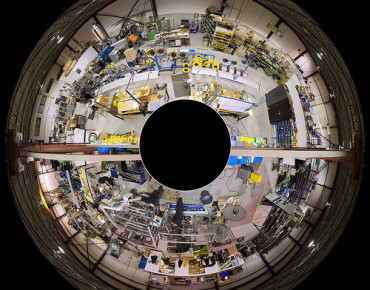Intel Buys Vision Chip Developer Movidius

Intel Corp. is acquiring low-power machine vision specialist Movidius in a bid to bolster its embedded visual computing capabilities.
Intel (NASDAQ: INTC) announced Tuesday (Sept. 6) it was buying the developer of low power chips to accelerate the integration of machine vision to connected devices. The roster includes drones, robots and virtual reality headsets, the company said. Terms were not disclosed.
Intel's machine vision strategy focuses on combining CPUs and vision processors with cameras to allow devices to understand their surroundings. "Upon integration, computer vision enables navigation and mapping, collision avoidance, tracking, object recognition, inspection analytics and more—capabilities that are extremely compelling in emerging markets," Josh Walden, general manager of the chipmaker’s New Technology Group, noted in a blog post announcing the deal.
"Movidius has been attacking this challenge at the device level—combining advanced algorithms with dedicated low-power hardware," added Remi El-Ouazzane, CEO at Movidius. "At Intel, we’ll be part of a team that is attacking this challenge from the cloud, through the network and on the device."
Movidius, San Mateo, Calif., is the latest machine intelligence acquisition for Intel, which earlier acquired deep learning specialist Nervana Systems and cognitive computing developer Saffron. Those deals along with the Movidius acquisition are aimed at new machine vision capabilities targeting object recognition and scene understanding as well as tracking and navigation aids, Intel's Walden noted.
"This acquisition brings algorithms tuned for deep learning, depth processing, navigation and mapping, and natural interactions, as well as broad expertise in embedded computer vision and machine intelligence," he added.
The spate of acquisitions also is intended to fill out Intel's "depth sensing" strategy dubbed "RealSense" that attempts to leverage vision chips and "programmable solutions" such as FPGA's via a cloud platform to connect devices and sensors.
Among the goals, the partners added, are extending machine vision and other artificial intelligence technologies to "think" as well as see.
Earlier this year, Google (NASDAQ: GOOG) announced plans to integrate the machine vision specialist's flagship MA2450 chip, the latest version it Myriad 2 family of “vision processors.” It also planned to integrate the processors with Movidius's software development tools.
Google has used a Movidius chip for its Project Tango, an Android-based technology platform that leverages computer vision to enable mobile devices to perform 3-D motion tracking and positioning for applications like indoor navigation. The spatial perception platform also uses a Tegra K1 processor supplied Nvidia Corp. (NASDAQ: NVDA).
Movidius also has attracted partners such as Lenovo (HKG: 0992) seeking to incorporate its sub-1-watt vision processors into devices like virtual reality goggles. The Myriad 2 vision processor combines an image signal processor with hardware accelerators to offload vision processing from a devices CPU and graphics processors, thereby reducing power consumption.
Related
George Leopold has written about science and technology for more than 30 years, focusing on electronics and aerospace technology. He previously served as executive editor of Electronic Engineering Times. Leopold is the author of "Calculated Risk: The Supersonic Life and Times of Gus Grissom" (Purdue University Press, 2016).










